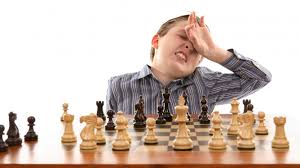Chess is a game of strategy and skill, requiring players to think several moves ahead and anticipate their opponent’s moves. However, even the best players can make mistakes known as chess blunders. These blunders can range from simple oversights to critical errors that lead to a loss. In this article, we will delve into some of the top chess blunders, understand why they happen, and explore how players can avoid them to improve their game.
What are Chess Blunders?
Chess blunders are mistakes made during a game that result in a disadvantageous position or loss of material for a player. These mistakes can occur due to oversight, miscalculation, or misjudgment of the board’s position. Even experienced players can fall victim to blunders, especially under time pressure or when facing unexpected moves from their opponents.
Common Types of Chess Blunders
- Piece Loss: This occurs when a player moves a piece to a square where it can be captured easily by the opponent, resulting in the loss of valuable material.
- Miscalculated Tactics: Players may overlook opponent’s threats or fail to calculate the consequences of their moves accurately, leading to tactical oversights.
- Ignoring Basic Principles: Sometimes, players deviate from fundamental principles of chess, such as controlling the center, developing pieces and ensuring king safety, which can lead to vulnerable positions.
Reasons Behind Chess Blunders
Chess blunders can be attributed to various factors, including psychological, strategic, and tactical aspects of the game.
Psychological Factors
- Time Pressure: Players may make mistakes when under time constraints, leading to rushed decisions and oversights.
- Overconfidence or Underestimation: Overestimating one’s position or underestimating the opponent’s moves can result in critical blunders.
Strategic and Tactical Factors
- Failure to Visualize: Inability to accurately visualize future board positions and outcomes can lead to errors in judgment.
- Lack of Focus: Loss of concentration or distraction during a game can cause players to overlook key moves and threats.
How to Avoid Chess Blunders
- Calculate Moves Carefully: Take your time to analyze the consequences of each move, considering opponent’s responses.
- Anticipate Opponent’s Plans: Stay vigilant and try to predict your opponent’s strategies and tactics.
- Stick to Basic Principles: Focus on controlling the center, developing pieces, and safeguarding your king throughout the game.
- Practice Regularly: Regular practice helps improve pattern recognition and decision-making skills.
Famous Chess Blunders in History
The Immortal Game
One of the most famous blunders in chess history occurred in the Immortal Game played between Adolf Anderssen and Lionel Kieseritzky in 1851. Anderssen sacrificed his queen to deliver checkmate in a stunning combination of moves, showcasing the power of tactical play.
Kasparov vs. Deep Blue
In 1997, during a match between Garry Kasparov, the reigning world champion, and IBM’s Deep Blue computer, Kasparov made a critical blunder in the second game that allowed Deep Blue to secure a win. This match marked a significant milestone in the history of chess and AI.
Current Trends and Future Fads in Chess
Current Trends
- Online Chess Platforms: With the rise of digital platforms, online chess has become increasingly popular, allowing players to compete against opponents from around the world.
- AI Analysis: Players are leveraging AI-powered tools for post-game analysis and improving their gameplay.
Future Fads
- Esports Integration: Chess is gaining traction as an esports, with organized tournaments and streaming platforms attracting a wider audience.
- Advanced Training Tools: As technology evolves, we may see the development of more sophisticated training tools that use AI to simulate opponent behavior and provide personalized coaching.
Conclusions
Chess blunders are an inherent part of the game, but understanding their causes and learning from historical mistakes can help players improve their skills and become more strategic in their approach. By focusing on careful calculation, anticipating opponent’s moves, and sticking to fundamental principles, players can minimize blunders and elevate their game to new heights. As chess continues to evolve with technological advancements and changing player dynamics, the future promises exciting innovations and opportunities for both casual and competitive players alike.




